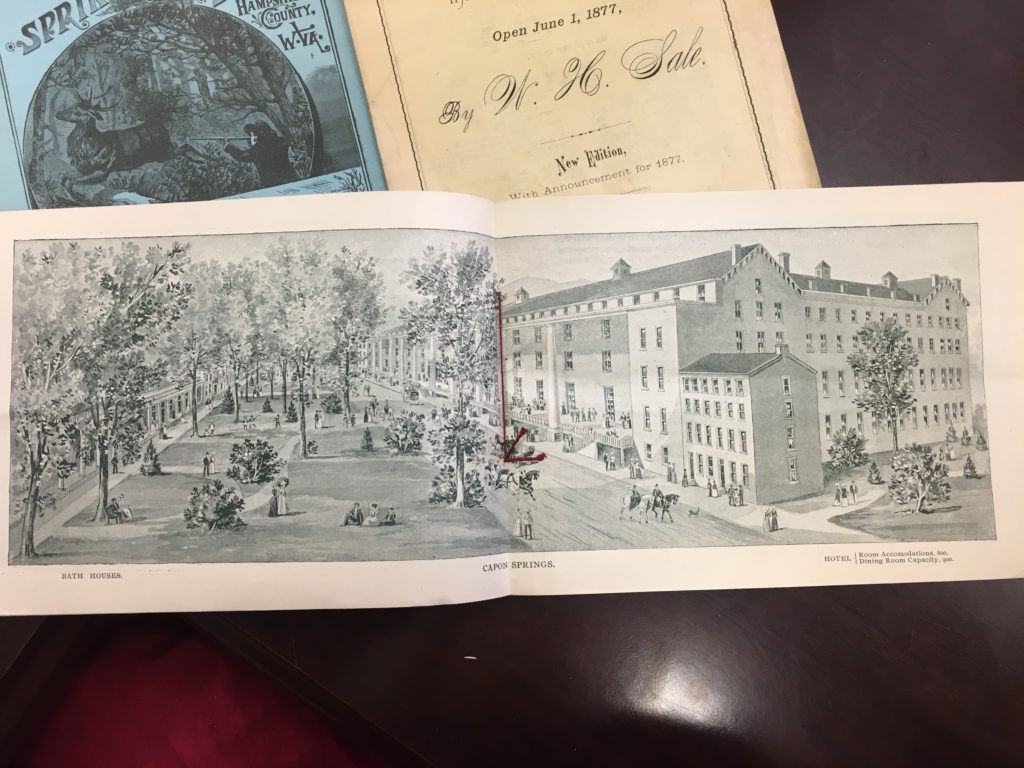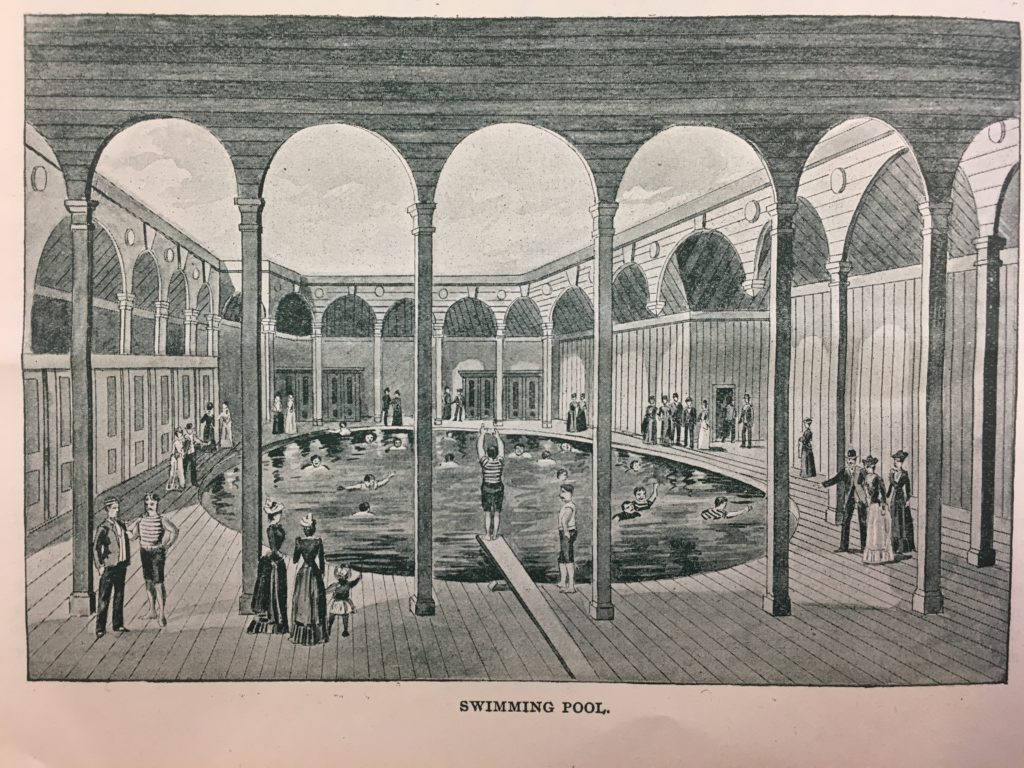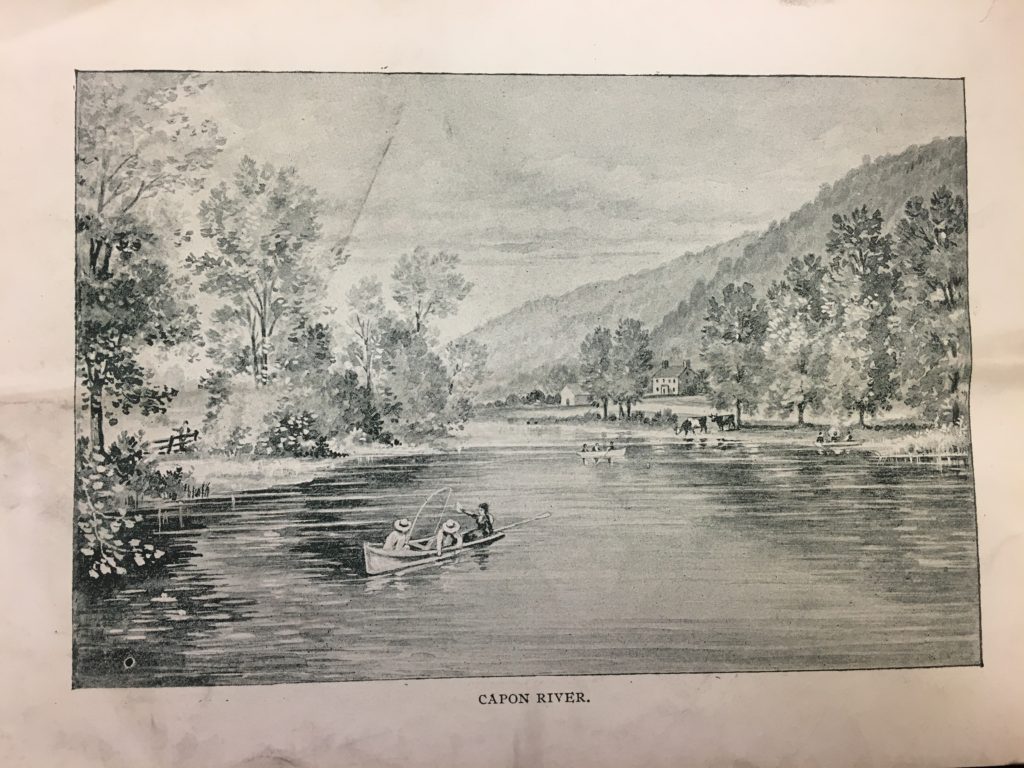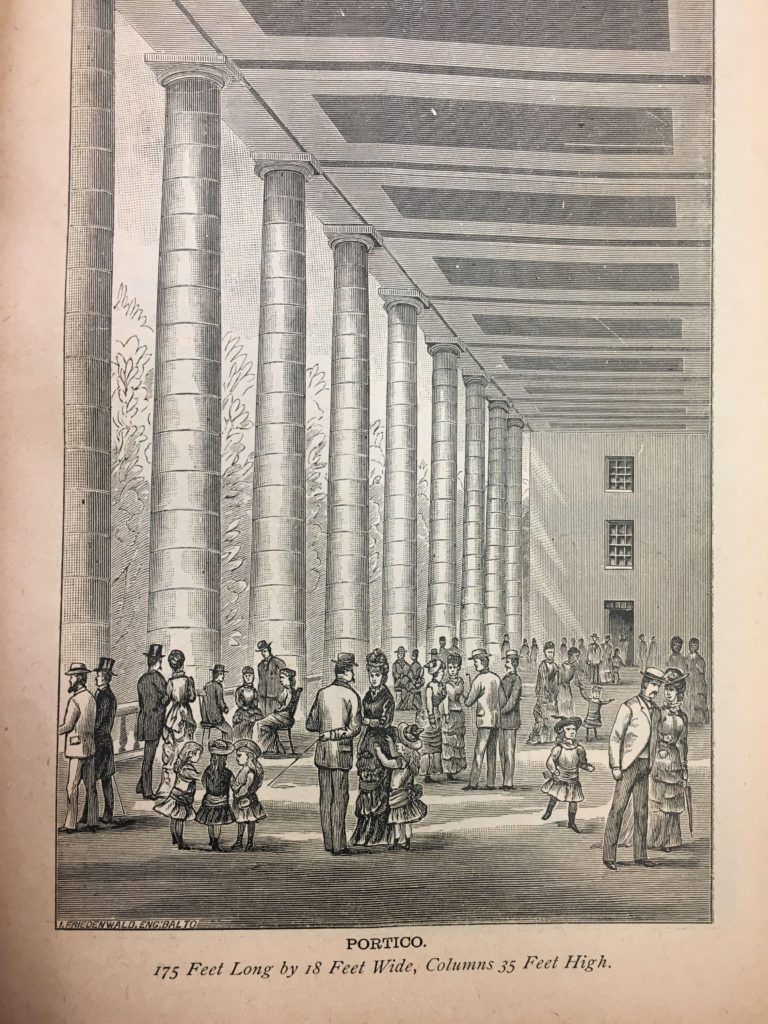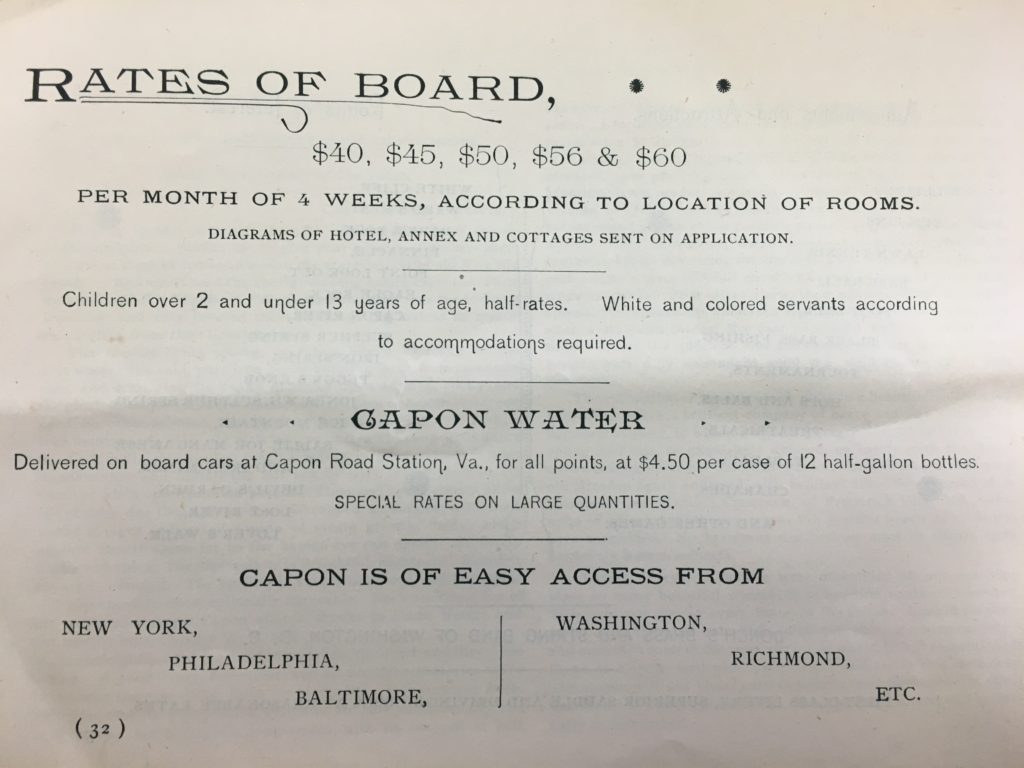Back to West Virginia to visit Capon Springs! Henry Frye discovered the mineral springs of Hampshire County in the late 1760s, and by 1787, there was enough interest in the area that 20 acres of land was named as the town of Watson.
In 1850, the land began developing rapidly, and people began to visit both Capon Springs, which housed alkaline lithia water, and Chalybeate Springs, whose water was full of iron. The water is at a cool 65 degrees because of the surrounding mountains.
The Mountain House Hotel was four stories high and promoted large, airy rooms. The hotel hosted a dining room and ballroom where “those who please go to the ball-room in evening dress, while those who so prefer dance in their ordinary promenade attire.”
The State of Virginia also built Greek Revival pavilions and President’s cottages to house baths. A Philadelphia man who sold water from the springs eventually bought the land in the 1930s. Today, the land is still owned by the family who promise “a true old fashioned seasonal getaway.” The resort is only two hours from Washington, DC, making it a popular place for those in the city. There’s much to do if taking to the waters is not your thing: hammocking, hiking, croquet, golf, and frisbee golf are great ways to spend some time!
Sources:
Ambrose, Kevin. “Before air conditioning there was Capon Springs, West Virginia.” The Washington Post. July 12, 2013. Website. https://www.washingtonpost.com/news/capital-weather-gang/wp/2013/07/12/before-air-conditioning-there-was-capon-springs-west-virginia/
Capon Springs. (Medical Trade Ephemera Collection) Historical Medical Library of The College of Physicians of Philadelphia, Philadelphia, PA.
Capon Springs. National Register of Historic Places Registration Form. 5 October 1993.
Capon Springs & Farms. Website. https://www.caponsprings.net/


